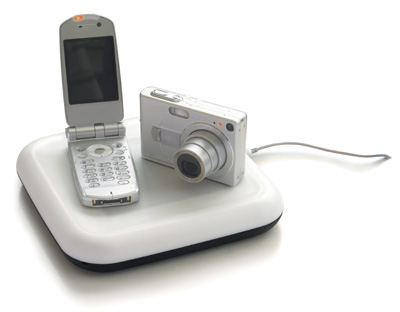You may have to deal with proprietary cables for multiple devices, meaning each cable will fit one — and only one — of your gadgets. If you aren’t lucky in cable roulette, you have to keep grabbing cables until you find the right one. And if you have to recharge everything at once you’ve got a techno-octopus just waiting to tangle you up.
But there are ways to transmit power — and charge devices — without cables. There are several products on the market today that you can use to recharge a device just by setting the gadget down on a charging pad. Then, as if by magic, power transmits from the pad to the device. But it’s not magic — it’s science!
From Tesla to Today
Nikola Tesla was quite a character. He was an eccentric genius whose work in the late 18th and early 19th centuries revolutionized electronic engineering. He was a pioneer in fields ranging from radio transmissions to developing alternating-current electricity. Tesla also had quite a few rivals — his work tweaked the noses of some of the greatest inventors of the time, including Thomas Edison and Guglielmo Marconi.
Tesla filed many patents during his lifetime. One of those appeared in the patent office on Jan. 18, 1902. The patent’s title was “Apparatus for Transmitting Electrical Energy.” In the patent, Tesla describes a device that he believed could transmit electrical power from one conductor to another without the need for wires. Ultimately, Tesla’s work in this field failed due to engineering and financial obstacles. But the dream didn’t die with Nikola Tesla.
Transmitting power through radio waves at first seemed promising. A good example of how radio waves can transmit power is a crystal radio. This basic radio consists of a long wire as an antenna, a diode, another wire to act as the ground wire and a crystal earphone. By attaching the two wires to either end of the diode, connecting the ground wire to a metal stake in the ground and connecting the crystal earphone to the ends of the diode, this radio can pick up radio waves that you can actually hear, yet you don’t need a battery or other power source to hear them — the radio waves themselves provide the power.
The trouble with radio wave transmissions is they aren’t very efficient. Radio waves spread out as they transmit — only a relatively small percentage of them would make it to reach the antenna for the charging device. But there are other methods to send electricity wirelessly, including through microwaves or magnetism. The magnet approach really resonated with engineers looking for a way to get rid of those extra charging cords.
Magnets, Electricity and Inductive Coupling
To understand how wireless power chargers work, we need to take a look at how magnetism and electricity are related. It’s a relationship that makes possible hundreds of different types of electronic devices!
First, let’s take an electromagnet. It’s easy to make a simple electromagnet — all you need is a battery, some insulated copper wire and an iron nail. Wrap the wire around the iron nail, leaving enough wire on either end to connect to the battery. Make sure each time you wrap around the nail that you’re going in the same direction. The more coils you make around the nail, the stronger your electromagnet will be.
Once you’ve got your nail wrapped in insulated wire, you can connect the two ends of the wire to the terminals on a battery. Electricity flows through the coiled wire, generating a magnetic field along the nail. You can use the nail to pick up other nails through magnetism. If you switch the ends of the wire to the opposite terminals on the battery, you’ll reverse the polarity of your electromagnet — what was the north end of the magnet becomes the south end and vice versa.
If you assemble a second coil of wire and place it near the first, you can use the magnetic field from your electromagnet to create a flow of electrons in the second coil. If you hook that second coil of wire to a voltmeter, you can actually see the needle or readout change whenever you connect or disconnect the wires from the battery.
That’s because exposing a coil of wire to a changing magnetic field can induce electricity to flow through that wire. The key is that the magnetic field must change to keep electricity flowing — a stable magnetic field won’t work as an inductor.
A battery provides electricity in a direct current — the electricity always flows in the same direction. But if you hook up an electromagnetic to an alternating current — a circuit in which electricity flows first in one direction and then the other many times per second — you alternate the polarity of the electromagnet in time with the changes in the current’s direction. That creates a constantly changing magnetic field — the perfect condition for inducting electricity.
For more Detail: How Wireless Mobile Chargers Work

